Zinnias are easy-to-grow, and a beautiful addition to any garden or balcony. Populating your garden with these vibrant flowers might leave you wondering if zinnias are perennials, especially if they reappear the next year. Understanding this aspect of zinnias can help you plan out your garden's future design and maintenance.

So let's quickly get to the answer of this important question, of whether zinnias are perennials or annuals. The answer may surprise you.
Are Zinnias Perennials Or Annuals?
Most garden variety zinnias, or Zinnia elegans, are typically grown as annual flowers, meaning they complete their life cycle in one year, from seed, to plant, to flower, and then they die. They are not considered to be perennials, which are plants that live for more than two years, regrowing every spring.

That being said, in warmer climates where frost is rare or nonexistent, some of these zinnias can survive through the winter, and then grow again in the spring. This can allow for an extended period beyond the annual cycle.
This would be more an exception than the norm, and these garden zinnias would still be treated as annuals in terms of gardening and cultivation practices.
There are species of zinnias however which are considered to be truly perennial. Three notable species include Zinnia grandiflora, Zinnia acerosa, and Zinnia anomala.
These plants are often found growing in the wild, and are not as commonly available as annual zinnia varieties. They can be grown in the garden however, in the right climates.
These perennial zinnias offer unique options for gardeners looking to incorporate long-lasting, drought-tolerant, and low-maintenance plants into their landscapes.
In this article, you'll discover the classification of zinnias and find out more about the growth patterns of annual versus perennial cultivars. By the end, you should have a better idea of how to incorporate zinnias into your garden and maximize their blooming potential. So let's dive in and explore the colorful world of zinnias.

Understanding Zinnias
Zinnias are a vibrant and beautiful addition to any garden. In this section, we'll explore the life cycle of zinnias and distinguish them as perennials or annuals to help you make an informed decision for your garden.
The Lifecycle Of Zinnias
Zinnias belong to the Asteraceae family and are native to Mexico. Here's a brief overview of a zinnia's life cycle:
1. Germination: Zinnias germinate when conditions are right, within 7-14 days of planting seeds in the ground, or starting them indoors. Germination occurs more quickly when the soil is warm.
2. Seedling Growth: The young zinnia plants develop leaves, stems, and roots, usually within a couple of weeks. It will take up to three months for the plants to become full sized and mature.
3. Flowering: Zinnias begin to bloom around 60-70 days after germination. Smaller plants can begin to produce flowers, even before they are mature. They produce an array of colors, such as red, pink, yellow, and orange. Flowers are often multi-toned and can be strikingly beautiful.

4. Seed Production: Once the flowers have bloomed, the plant begins to form seeds in the flower heads. Seeds ripen within 4 to 6 weeks after blooming.
5. Dormancy Or Death: At the end of the season, the zinnia plant will eventually die, or enter a dormant phase. In colder growing zones, as soon as a hard frost hits, the annual plants are destroyed, and the perennials will recede and become dormant.

Perennial Versus Annual Plants
To determine if zinnias can be classified as perennials, let's first understand the difference between perennial and annual plants:
- Perennial plants are those that can live for more than two years. Unlike annuals, they do not need to be replanted each year. They typically undergo a period of dormancy during unfavorable seasons, and then come back to life when conditions improve. Some common perennials are peonies, hostas, and echinacea.
- Tender perennial plants have a lifecycle that could allow them to live for several years; however, they are not cold-hardy in all climates. These plants can survive year-round in warm climates where frost is rare or nonexistent, but are treated as annuals in colder regions because they cannot survive freezing temperatures. Some common examples of tender perennials include rudbeckia, statice, and salvia.
- Annual plants have a life cycle that lasts only one growing season, from germination to seed production, and then death of the plant. They are often used for their vibrant colors and extended blooming period, filling gardens with color from spring through fall. They do not return the following year. Examples of annuals include marigolds, petunias, and sunflowers.

Annual Zinnias: Zinnia Elegans
Zinnia elegans, also known as common zinnia, brightens gardens as an annual, completing it's life cycle from seed to flower to seed within a single season. Interestingly, in some locations, these vibrant flowers can reseed themselves, mimicking the enduring presence of perennials.
While Zinnia elegans is typically grown as an annual due to it's sensitivity to frost, performance can mimic that of perennials in frost-free zones, specifically USDA hardiness zones 9-11. In these warmer regions, where chilly winters are a rarity, Zinnia elegans can potentially last longer than a single season, if they avoid frost and enjoy prolonged warm temperatures.
Such areas typically encompass the warmer parts of the southern United States, along with coastal and tropical zones where frost is rare. Gardeners lucky enough to live in these climates can enjoy the continual beauty of z. elegans as a short-lived perennial, relishing its ongoing growth and blooms without the annual planting ritual.
In these warmer climates, Zinnia elegans can keep growing and flowering through winter, especially when the weather stays warm. Unlike many perennials, it doesn’t enter a deep dormancy, but rather might slow down and produce fewer flowers as the temperature cools.

Perennial Zinnias: Zinnia Grandiflora, Zinnia Acerosa, Zinnia Anomala
The perennial species of Zinnias, including Zinnia grandiflora, Zinnia acerosa, and Zinnia anomala, offer unique qualities that make them excellent choices for various garden settings due to their adaptability, drought tolerance, and attractive blooms. Let's explore why these Zinnias can be valuable additions to the garden landscape:
1. Zinnia grandiflora (Prairie Zinnia)
- Zinnia grandiflora is known for it's rugged nature. This perennial thrives in rocky, sandy soils and can withstand severe heat, strong winds, and cold temperatures. It's adaptability makes it suitable for challenging garden spots where other plants might struggle.
- As a perennial it spreads by rhizomes, and requires minimal water once established, making it an excellent choice for drought tolerant gardens. It's ability to flourish with little care appeals to gardeners looking for low-maintenance options.
- Attracting beneficial insects, including bees and butterflies, Zinnia grandiflora enhances biodiversity in the garden, supporting important pollinators.
- This remarkable plant enjoys an extended lifespan, making a reliable comeback every growing season in its preferred regions.
- Suitable for USDA hardiness zones 4-8.
2. Zinnia acerosa (Desert Zinnia)
- Zinnia acerosa is also exceptionally drought-tolerant, thriving in arid conditions where other plants may fail. Its low-growing, spreading habit makes it an excellent ground cover, reducing soil erosion and suppressing weeds.
- With a woody base and herbaceous stems that become woody with age, Zinnia acerosa is particularly durable, contributing to its longevity and perennial nature in the garden. This structural trait also makes it unique among Zinnias.
- Similar to Zinnia grandiflora, it attracts pollinators, including butterflies, birds, and bees, adding life and movement to the garden space.
- Grows in USDA hardiness zones 6-10.
3. Zinnia anomala (Shortray Zinnia)
- Zinnia anomala offers distinctively short petals or sometimes no petals at all, presenting a unique visual appeal. Its classification as a sub-shrub or a low-growing perennial with a woody base offers a delightful longevity, returning to bloom each season in areas where it thrives.
- Capable of living as a perennial in USDA hardiness zones 8-9, it showcases resilience across different environmental conditions, from drought tolerance to surviving in various soil types.
These perennial Zinnias contribute to sustainable and resilient gardening practices. They are drought tolerant and able to adapt to challenging conditions. The plants also attract beneficial wildlife, which supports our garden ecosystems.
Each species brings unique aesthetic qualities, from the bright yellow blooms of Zinnia grandiflora to the creamy-white petals of Zinnia acerosa and the distinct form of Zinnia anomala.
Although not quite as flashy as the beautiful Zinnia elegans, these species can enrich garden landscapes with their own unique colors, textures, and forms that please the eye and support the environment.

Keep Your Zinnias Blooming All Summer
Regardless of whether they are annual or perennial, you can keep your zinnias blooming all summer long with the right planting techniques, and the right care and maintenance.
Zinnias are beautiful flowers, with multiple varieties and vibrant colors. The plants make excellent cut flowers, are highly productive, and are a great choice for the cut flower garden.
We grow lots of zinnias, and rows of multiple varieties, every year at the flower farm.
To keep your zinnias blooming vibrantly all summer long, follow these gardening tips for optimal growth and flower production. It doesn't take much to get these incredible flowers to produce all season.

1. Choose The Right Location
Plant your zinnias in a sunny spot that receives at least 6-8 hours of direct sunlight daily. Zinnias thrive in full sun and well-drained soil.
2. Soil Preparation
Enrich the soil with lots of organic matter, such as compost, or a balanced fertilizer before planting to ensure it is rich in nutrients. Zinnias prefer a soil pH between 5.5 and 7.5.
3. Watering
Annual zinnias like moist soil, so keep the soil consistently moist but not waterlogged. Water zinnias at the base to avoid wetting the foliage, which can lead to fungal diseases. Aim for about 1 inch of water per week, either from rainfall or supplemental watering.
Most perennial zinnias prefer arid conditions, and are drought tolerant.

4. Mulching
For annual zinnias, apply a layer of bark mulch around the plants to retain soil moisture, regulate soil temperature, and reduce weed growth.
5. Deadheading
Regularly remove spent flowers (deadhead) to encourage new blooms. This prevents the plants from putting energy into seed production and encourages more flowers. When deadheading, cut deeply along the stem, to promote new stem growth as well.
6. Fertilizing
Feed your zinnias a balanced, slow-release fertilizer early in the season. You can also use a liquid fertilizer every few weeks to promote continuous growth and blooming.
7. Spacing
Plant zinnias at the recommended spacing according to type, to ensure good air circulation around the plants. This helps prevent fungal diseases that can weaken or kill the plants. We plant Zinnia elegans 9-12 inches apart in landscape fabric, for the cut flower garden.

8. Pest and Disease Management
Keep an eye out for common pests such as aphids and spider mites, as well as diseases like powdery mildew. Treat infestations or infections early, using appropriate organic or chemical controls as necessary.
9. Pinching Back
For bushier plants and more blooms, pinch back the tips of young zinnia seedlings early in the season, when they are 6-8 inches tall. Although this may seem counter-intuitive, if you are brave enough to pinch, it will encourage branching and reward you with more blooming stems to harvest throughout the season.
10. Frequent Cutting
Continue to harvest your zinnia flowers as they are ready, and the plants will continue to produce more stems. This is because zinnias are cut and come again flowers, and the more they are cut from, the more stems they will produce.
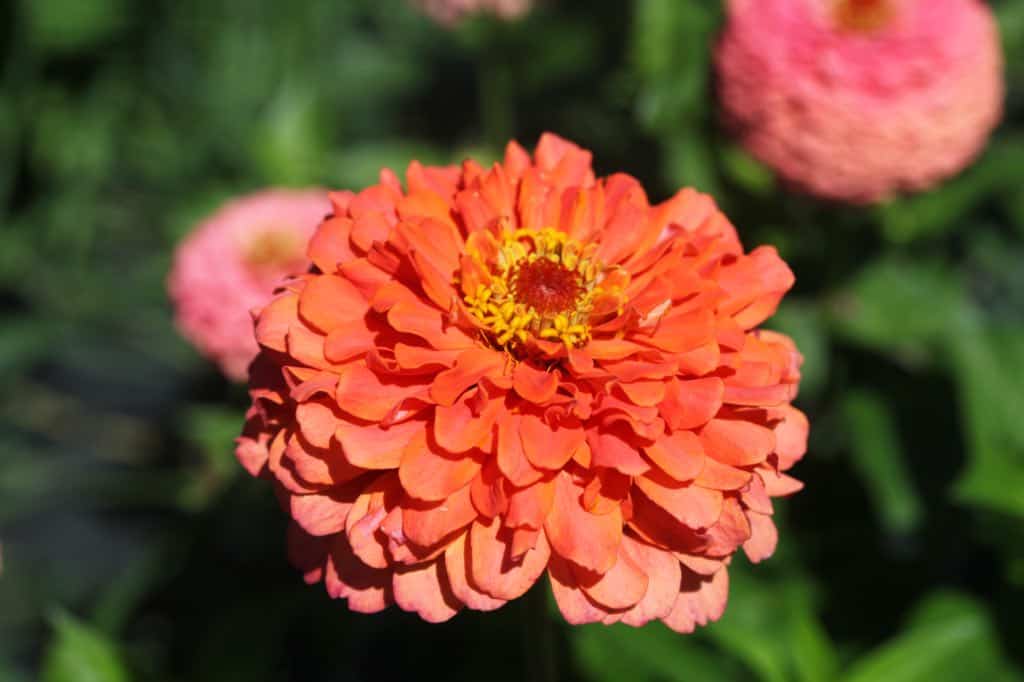
Frequently Asked Questions
Do Zinnias Come Back Every Year?
Zinnia elegans, the common garden zinnias, are generally considered annual plants, meaning they complete their lifecycle in one growing season and don't come back every year. However, in some regions with mild winters, these zinnias may survive and grow as short-lived perennials.
There are also perennial zinnias that can be grown in some climates, although these plants are not as common for the garden space.

In Which USDA Hardiness Zones Can Zinnias Be Grown As Perennials?
As mentioned earlier, zinnias are typically grown as annuals. However, in USDA hardiness zone 9 to 11, Zinnia elegans may grow as short-lived perennials due to the warmer climate.
UDSA hardiness zones for perennial zinnia varieties will vary depending on the species.
Can Zinnias Thrive In Partial Shade Or Do They Require Full Sun?
Zinnias prefer full sun to thrive and produce the most abundant, vibrant blooms. However, they can tolerate partial shade, especially in hot climates where some afternoon shade can be beneficial. Keep in mind that zinnias growing in partial shade may have fewer flowers and weaker stems.
When growing zinnias in containers in a full sun location, be aware that you will need to water more frequently to prevent the soil from drying out.

Is It Possible For Zinnias To Self Seed And Germinate The Following Year?
Yes, zinnias can self-seed under the right conditions. If you leave some spent blooms on the plants instead of deadheading, they may produce seeds that fall to the ground and germinate the following year. This occurs usually in warmer climates, and less likely in colder growing zones.
I have never had a zinnia reseed in my zone 5b garden, despite growing hundreds of plants every year.
When the zinnia plants self seed, expect there to be some variation in appearance and color of the seedlings. This is because zinnias grown from seed are hybrids, and will likely not produce offspring identical to the parent plant.

Conclusion
While zinnias are traditionally grown as annuals, completing their life cycle in just one year, the enduring charm of perennial zinnias in certain climates cannot be overlooked.
Regardless of whether you're cultivating zinnias as annuals or enjoying the perennial nature of the perennial zinnia species, these flowers offer a delightful burst of color and life to any garden setting. Grow these showy flowers in your home gardens, the pollinator garden, or your cut flower garden.

Zinnias are some of the easiest flowers to grow. With their wide range of colors, and ease of care, just about anyone will be able to grow them.
By understanding the specific needs and characteristics of zinnias, gardeners can maximize their blooming potential, ensuring a lush, vibrant garden all summer long.
The versatile zinnia makes a wonderful addition to any outdoor space, promising beauty and satisfaction with minimal care. It is one of my absolute favorites in the cutting garden, producing so much joy all season long.
Consider saving some zinnia seeds at the end of the gardening season as well, to perpetuate these beauties in the garden next year. That way even the annual zinnias can return to the garden, year after year.

Have you ever wondered if zinnias were perennials or annuals? Have you grown both? Be sure to leave a comment below to share your experience!
Other Posts You May Like:
PIN IT FOR LATER!

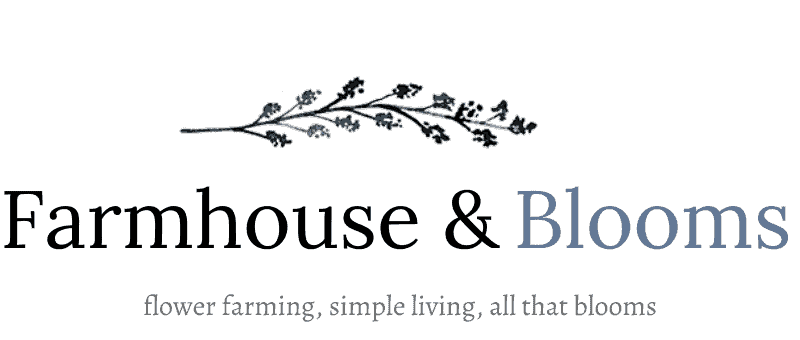




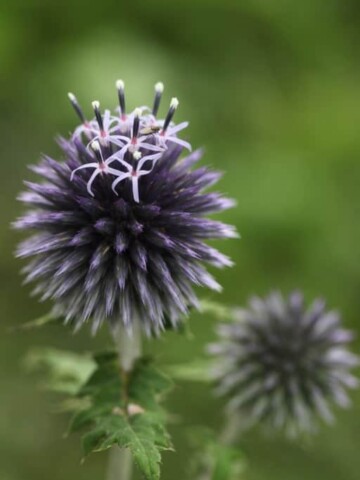
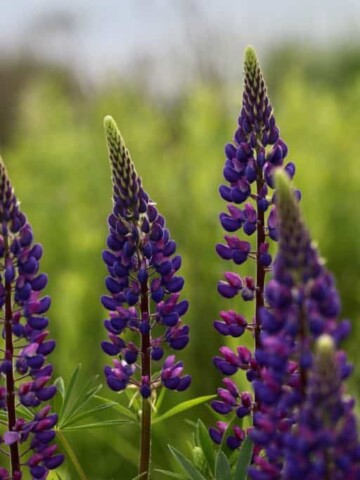
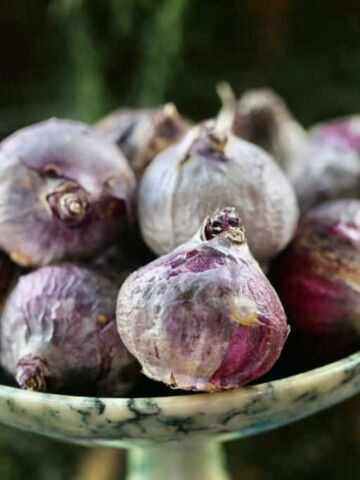

Leave a Reply